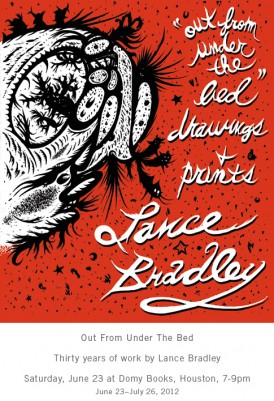Unrivalled Splendor
A vast open stretch of approximately 25,000 square feet on the upper floor of the Museum of Fine Arts, Houston’s Law Building guarantees that viewers of the unparalleled exhibit of Japanese antiques and artifacts Unrivalled Splendor: The Kimiko and John Powers Collection of Japanese Art can take it all in at once even while getting up close and personal. As curator Christine Starkman excitedly explains at the media preview “There’s never been this many pieces of the Powers collection displayed at one time. At best there were handfuls of items, just the Dragon [screen] or just the Tiger [screen] but never have they been displayed across from each other.”
The Powers Japanese collection numbers over 300 individual works of art, of which there are 85 displayed during the show’s duration. The Powers obtained these objects during the 1960s and 1970s and the overall holdings are considered the most important assemblage of Japanese art in the West. The items range in age from the 8th century to the 18th century. Also located in the Law Building are galleries dedicated to ancient art from China, India, Indonesia, Japan and Korea.
If the collection was ever taken back to Japan it would be impounded by the government whose attitude has changed regarding the export of what are now considered national treasures. Starkman describes the experience of first seeing these objects where they’re permanently stored near Denver as being like a kid in a candy store. Some of the screens or prints are kept rolled and rarely see even the dim light in their storage facility. Upon seeing many of these small paintings or statues with their exotic colors or depictions of mudras the thing that’s hardest to grasp is how fresh and new they appear. Many of the larger screens are presented sans glass cases with only a raised platform keeping people about three feet away.
Three wooden pagodas or in this case small wooden towers standing eight-and-a-half inches tall are dated from 770 from Nara, which was then Japan’s capital. Starkman mentions that inside the objects are rolled prayers on parchment that would surely disintegrate were they removed. The pagodas are part of the exhibit’s Early and Medieval Buddhist Art section. The entire show is divided into eight portions. Interesting progressions see the art incorporating European elements as foreigners try to conquer and sell goods, including one hilarious portrait that depicts a Westerner as a fop. Other portraits present unusual poses from Buddha.
From the fifth segment, The Scholarly Ideal, the six-panel screen Rocks (1783) by Yosa Buson makes perhaps the best use of the open space. Indeed you can see from the eighth section all the way across to the first section and Buson’s ink and light color on paper defy tradition, looking more like modern abstract art with its 141-inch wide frame and mostly vertical lines.
From across the span of the floor Rocks takes on different meaning the closer you get. Up close your eyes can’t help but notice the texture of the sparse application of ink. From afar your eyes are pulled to the bottom right where the only horizontal lines on the screen, showing one round rock, provide new meaning and make the other rocks reduced to some kind of free floating forms.
So much grace can only be expected from an exhibit that covers over 1000 years of a nation’s culture. Unrivalled Splendor: The Kimiko and John Powers Collection of Japanese Art will be on display until late September.
- Michael Bergeron













